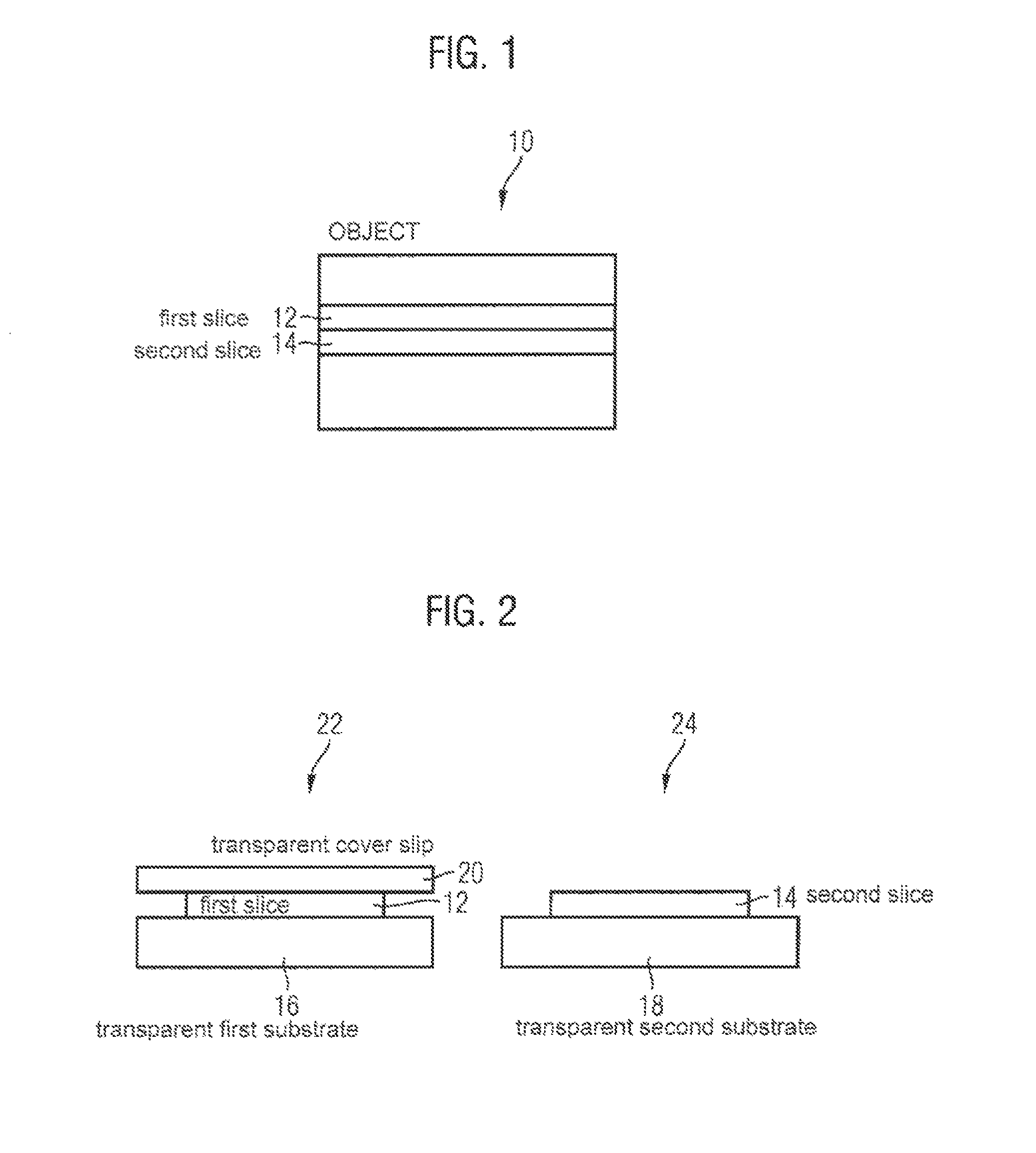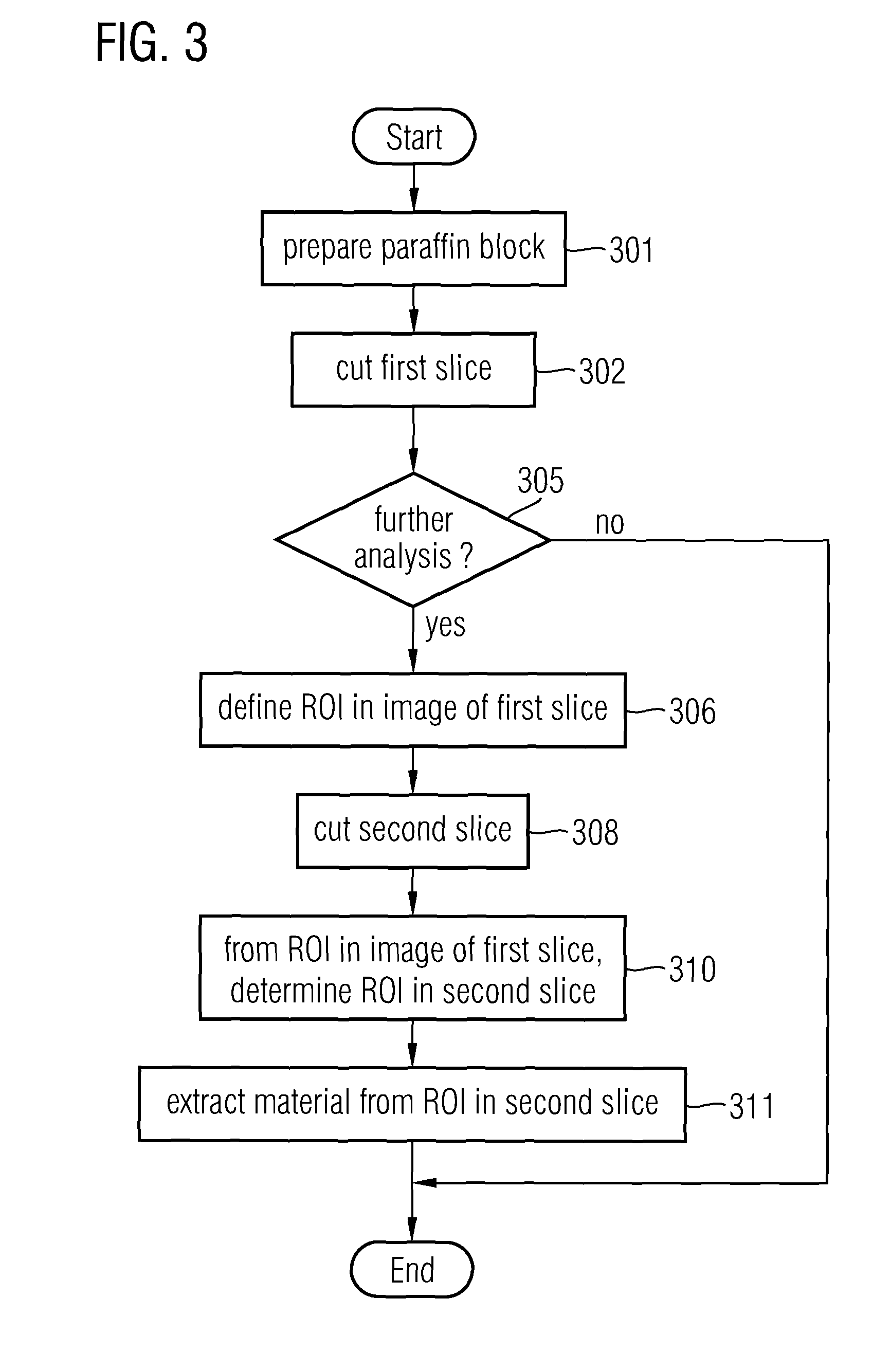Microdissection method and information processing system
a microdissection and information processing technology, applied in the field of microdissection methods and information processing systems, can solve the problems of mismatch in workflow, currently not being able to do laser microdissection on samples, and not being able to achieve microdissection on samples, so as to facilitate the control of workflow
- Summary
- Abstract
- Description
- Claims
- Application Information
AI Technical Summary
Benefits of technology
Problems solved by technology
Method used
Image
Examples
Embodiment Construction
[0108]Unless specified otherwise, identical or similar reference numerals appearing in different Figures label identical or similar components.
[0109]Shown in FIG. 1 is a schematic side view of a paraffin block 10 comprising biological material, for example, one or more tissue samples, or individual cells. The block 10 comprises a first layer 12 and an adjacent second layer 14 which are destined to be cut from the block to form a first slice 12 and second slice 14, respectively. The first layer 12 and the second layer 14 may alternatively be non-adjacent layers of the block 10 separated by a distance sufficiently short for the two layers 12, 14 to have similar features. More precisely, the two layers 12, 14 are sufficiently near each other for a feature of interest in the block 10 to extend through both layers 12, 14. It is noted that the layers 12, 14 are merely conceptual. They do not need to be defined by any morphological features of the block; rather, they are defined a posterio...
PUM
 Login to View More
Login to View More Abstract
Description
Claims
Application Information
 Login to View More
Login to View More - R&D
- Intellectual Property
- Life Sciences
- Materials
- Tech Scout
- Unparalleled Data Quality
- Higher Quality Content
- 60% Fewer Hallucinations
Browse by: Latest US Patents, China's latest patents, Technical Efficacy Thesaurus, Application Domain, Technology Topic, Popular Technical Reports.
© 2025 PatSnap. All rights reserved.Legal|Privacy policy|Modern Slavery Act Transparency Statement|Sitemap|About US| Contact US: help@patsnap.com



